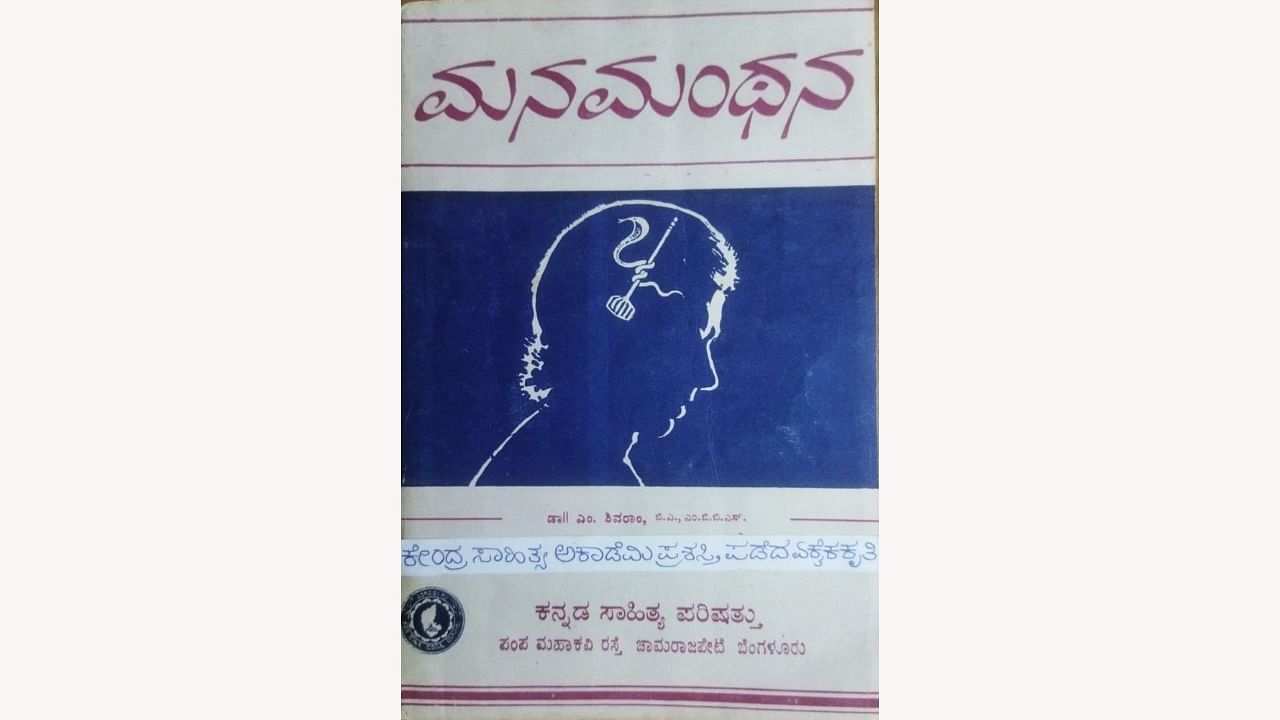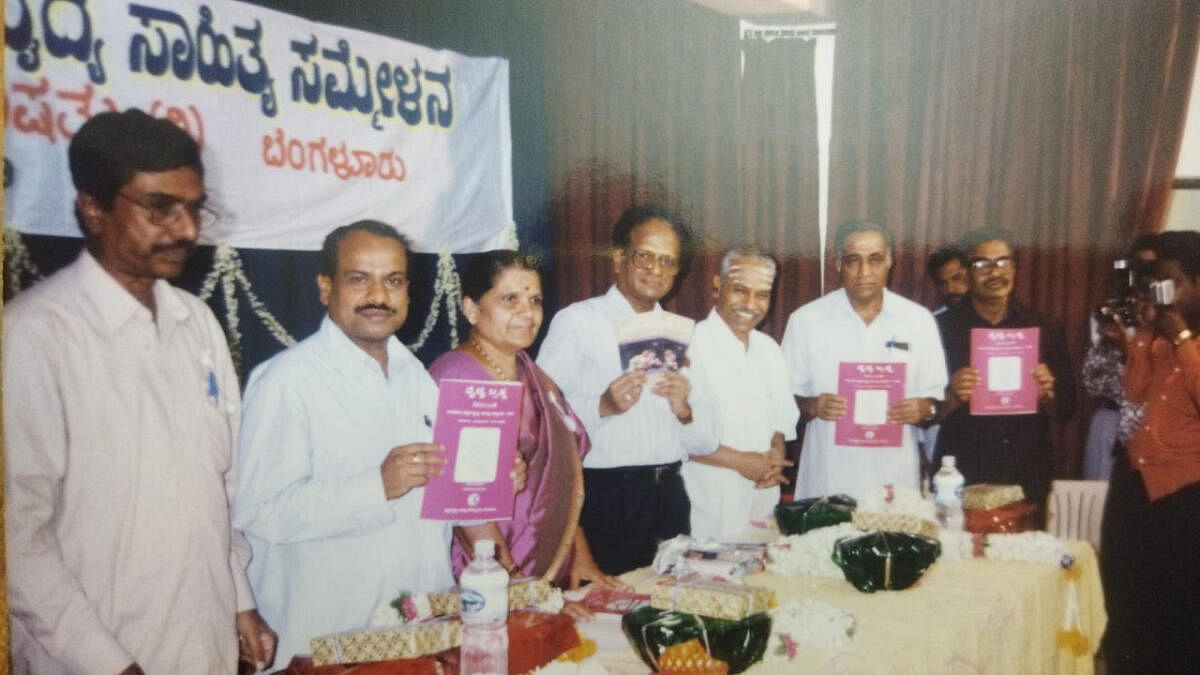

In the 20th century, modern Kannada literature witnessed major literary movements, including ‘Navodaya’, the progressive phase, and ‘Navya’, the new modernist phase. Among these, another form cropped up too — it saw many picking up storytelling and scripts, alongside their stethoscopes and scalpels.
This is how ‘Vaidyakeeya Sahithya’ (or medical literature) came about, featuring topics relating to health and medicine, written by authors from both medical and non-medical backgrounds.
Over the years, Kannada’s Vaidyakeeya Sahithya has seen many authors set records. With more than a hundred authors, medical writing in Kannada has one of the largest bodies of work in the country. More than 12 books have received Central or State Sahitya Akademi awards.
Dr M Shivaram, popularly known as ‘Ra Shi’, had the unique distinction of being conferred the Sahitya Akademi award in 1976 for his book Mana Manthana related to mental health.
A second significant record was set by Dr C R Chandrashekhar, who is said to have written the highest number of books on mental health in any language in the world. He has authored more than 300 books and 1,200 articles related to mental health, mental disorders and personality development that have been immensely popular.
A psychiatry professor and celebrated writer on mental health, Dr Chandrashekar was inspired by the famed author of Sharapanjara, Triveni, as well as the work of Ra Shi. His mission was to dispel blind beliefs and increase awareness about health and science. About 16 lakh books authored by him have been sold so far, bearing testimony to his popularity.
Modern application
Beyond its literary value, medical literature has also become relevant in teaching paramedics and doctors in the state. There is a national focus now to teach medicine in regional languages. The literature available has proved useful in medical training in the Kannada medium. The Rajiv Gandhi University of Health Sciences has formed a committee to translate medical books into Kannada.
Dr H S Mohan, an eye surgeon, is a regular columnist on health-related topics. He has been able to highlight the latest medical advances in his weekly columns. In 1988, a write-up he did about an abandoned baby with disabilities helped the infant to be rescued, adopted and raised by a family in the USA.
The doctor who popularised the longest-surviving quiz program “Tat Antha Heli,” Dr N Someshwara, developed a passion for writing during his early student days. An author of more than 60 books, he is striving to document the history of the evolution of medicine.
Through the Vaidyakeeya Sahitya Parishat started in the 1980s, he has been conducting writing workshops for doctors and students. The nuances of translating English words to Kannada are emphasised in these workshops “They have increased the ease of writing for the younger generation,” says Dr Someshwara.
“A large majority of doctors practising in rural areas are bereft of updates on advances in medicine. Most are written in English. There is a need for doctors to write more in Kannada,” says Dr Suryanarayana Sharma, a neurologist. Dr Sharma has authored a book about strokes in Kannada.
For sisters Dr Shubrata and Dr K S Pavitra, the public dissemination of knowledge in Kannada make it more impactful. Dr Pavitra has authored more than 52 books on mental health. Her sister Dr Shubrata is an upcoming writer who has 7 books to her credit.
They took to writing to counteract stigma and impart awareness about health. Dr Shubrata also uses writing as a tool to teach communication skills to young writers and doctors.
Doctor-authors
Under the aegis of Vaidya Barahagara Balaga, a group of doctors interested in Kannada writing, its president Dr Shivanand Kubsad aims to conduct annual conferences. Young medical students are being encouraged to take up writing through essay competitions and book reviews. “With the usage of Kannada dwindling, our efforts are focused on educating doctors to effectively communicate in Kannada with patients,” explains Dr P S Shankar.
For a few doctors, writing about non-medical subjects has brought more satisfaction and recognition. Take the example of Dr Sunanda Kulkarni, who regularly gives short health tips on All India Radio through the ‘Radio Doctor’ series. She has found that authoring short novels and stories for children has been a satisfying experience. For Dr H S Anupama, writing a book based on the life of Akka Mahadevi has been an elevating experience.
Books written in Kannada are seeing rising demand for the past two to three decades, according to Ramesh Udupa, executive director of Navakarnataka Publications, one of the largest publishers in this field in Karnataka. Despite the onset of the internet, e-books, and Kindle, readers have not stopped buying books, he says.
In fact, three major publishers in Karnataka — Navakarnataka, Sapna and Vasantha Prakashana — have similar observations. Among all categories of books published, medical literature has retained popularity and interest in it is increasing. After Bengaluru, Mysuru and Dharwad see high demand for these books.
“Vaidyakeeya Sahithya has arrived in the mainstream of Kannada literature. The popularity of the preventive aspect of health has given more space to this form of literature now,” says Vijayamma, a writer and journalist.
More than one lakh books are sold at some book fairs, says Udupa. “We conduct on-site sale at major software companies in Bengaluru. Majority of the books sold are related to Vaidyakeeya Sahithya.”
He attributes the popularity of these books to growing interest in health-related topics. “People are now keen to learn about health and diseases before consulting doctors. When it comes out in Kannada, the connect is better,” he adds.
History
The earliest available medical literature in Kannada dates to Mangaraja I (1260CE) Khagendramani Darpana and Thimmaraja from 1750 CE. In the modern era, M Guru Rao, who worked in the erstwhile Mysore kingdom, authored Angleya Shastra in 1904. A significant contribution came in 1943, through Dr Dodderi Venkata Rao, who authored a book regarding sexual health.
Ra Shi, a founder of Bangalore Medical College, started the magazine Koravanji in 1942, with humorous articles.
The first column in medical literature, written by Dr Anupama Niranjana, was published in Prajavani. Her book Taayi-Magu set a record, seeing more than 50 reprints. The Kannada Pustaka Pradhikara has instituted an award in her name, awarded to an author in medical literature every year.
Dr Leelavathi Devdas, Dr C Annapurnamma and Dr H Girijamma were instrumental in contributing to writing on women’s health.